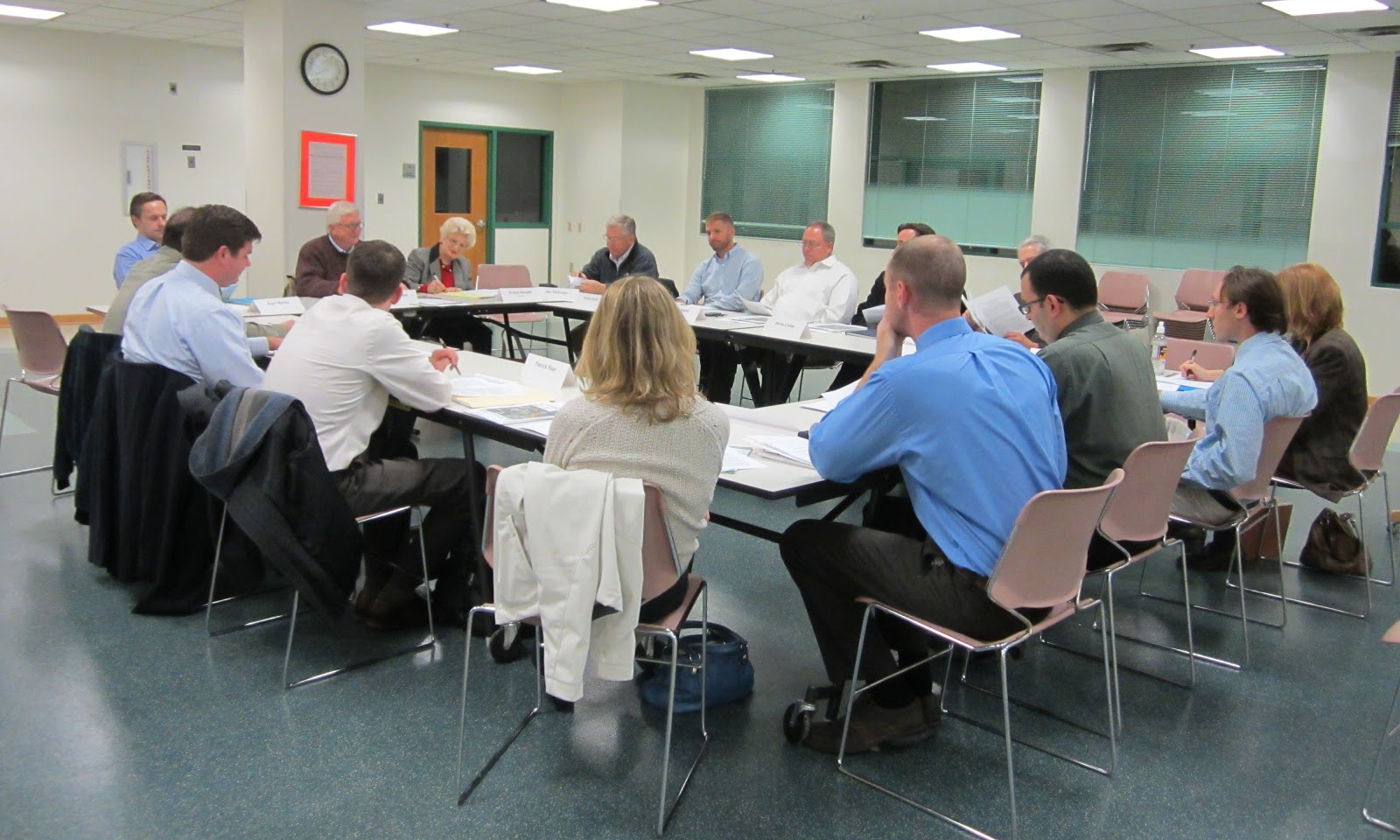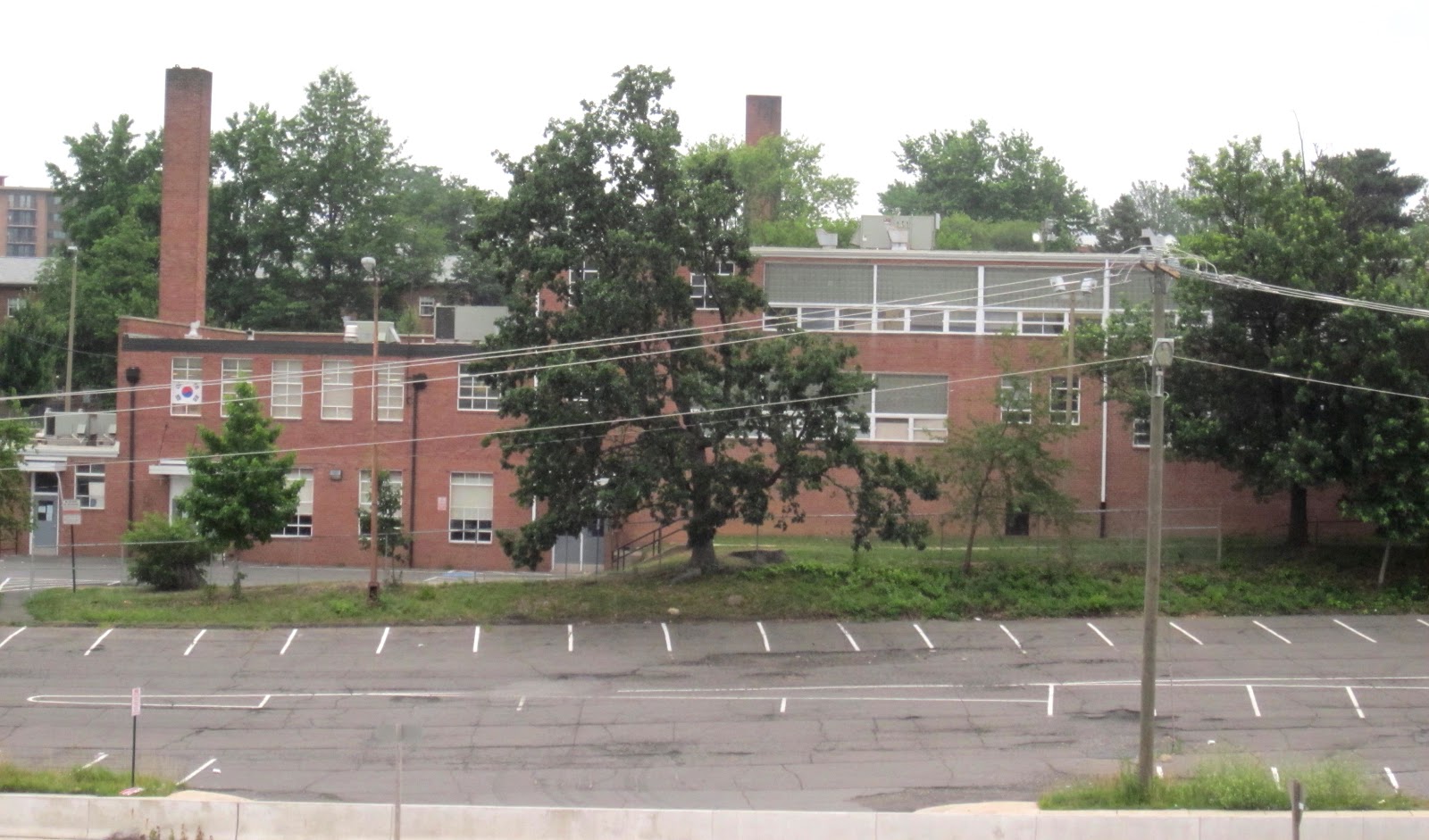Seven Corners Task Force considers existing conditions
 |
| The task force at work at the Mason District Government Center. |
Task force members were appointed by Mason Supervisor Penny Gross to come up with recommendations on how the area can be redeveloped after several visioning workshops were held last spring to gather public input. The task force had earlier decided to allow public comments at every third meeting, and the Nov. 13 meeting was one of the sessions where members of the community at large were invited to voice their concerns. The next such opportunity will be May 14.
Two community members asked the task force to put a priority on the need for a new school in Seven Corners. Suzie Phipps, a parent with children at Bailey’s Elementary School, said any redevelopment plans should include space for a new school because all the schools in Bailey’s Crossroads and Seven Corners are overcrowded or are projected to be over capacity within the next few years. Bailey’s Elementary is already 350 students above capacity.
 |
| The Willston Center as seen from Route 50. |
Eric Welch, the executive director of the Fairfax Leadership Academy (FLA), also urged the Task Force to consider school facilities. Since the Fairfax County School Board rejected the FLA’s proposal to use the Graham Road building, Welch needs to find another location for his proposed charter school.
One possibility is the Willston Multicultural Center on Arlington Boulevard in Seven Corners, which is expected to be a key element in any redevelopment plans. The future of that building is uncertain as the U.S. Department of Justice has found that it isn’t in compliance with the Americans with Disabilities Act (ADA).
According to Elizabeth Hagg, deputy director of the Fairfax County Office of Community Revitalization (OCR), the county is required to conduct a self-assessment on the building by January 2014 and will have to resolve the issue by 2017—either by shutting it down or bringing it into compliance by making it accessible to people with disabilities. The deed for the building approved by the county requires it to be used for educational purposes or it will revert to the owner of the adjacent shopping center.
Bernard Suchicital of the Department of Planning and Zoning presented a breakdown of Seven Corners into smaller land areas and described the existing developments, zoning, and possible increased density for each area. He noted that most of Seven Corners was built before current zoning rules were enacted. Even though denser development might be allowed on some plots, there are constraints that would impose limitations, such as requirements for parking structures.
Matt Flis, a planner with the OCR, gave a brief presentation on the demographic conditions in the Seven Corners study area:
- Population growth has been slower (1 percent annually since 2000) than the rest of the country, primarily due to the lack of new residential development.
- Seven Corners is extremely diverse. The population is 41 percent white, 19 percent Asian, 8 percent African American, and 53 percent Hispanic. Spanish is the number-one language spoken in the home. In contrast, in Fairfax County as a whole, the population is approximately 63 percent white and 16 percent Hispanic.
- Income levels in Seven Corners are lower than the county as a whole. The estimated median household income in Seven Corners is $43,834, compared to a countrywide median of $105,797.
- Seven Corners residents tend to be less educated. Approximately 42 percent of Seven Corners residents have attained a bachelor’s degree or higher, compared to 59 percent of Fairfax County residents. And while only 7 percent of county adults have not graduated from high school, 28 percent of Seven Corners adults lack a high school diploma.
There actually aren’t any parks at all in the study area, except for an unmaintained athletic field at the Willston Center. There are several parks within a mile of Seven Corners—in Arlington and Falls Church, as well as Fairfax County, but they aren’t well connected to Seven Corners neighborhoods by bike paths or trails.
At the task force’s next meeting, Dec. 11, the topic will be transportation and housing. The group plans to meet monthly through June 2013. In March it will review the recommendations of the separate working groups on connectivity and quality of life. The May meeting will be devoted to public comment. After the June meeting, the task force will work on crafting a transportation and land use plan and ultimately submit recommendations to Gross for an amendment to the county’s Comprehensive Plan.

